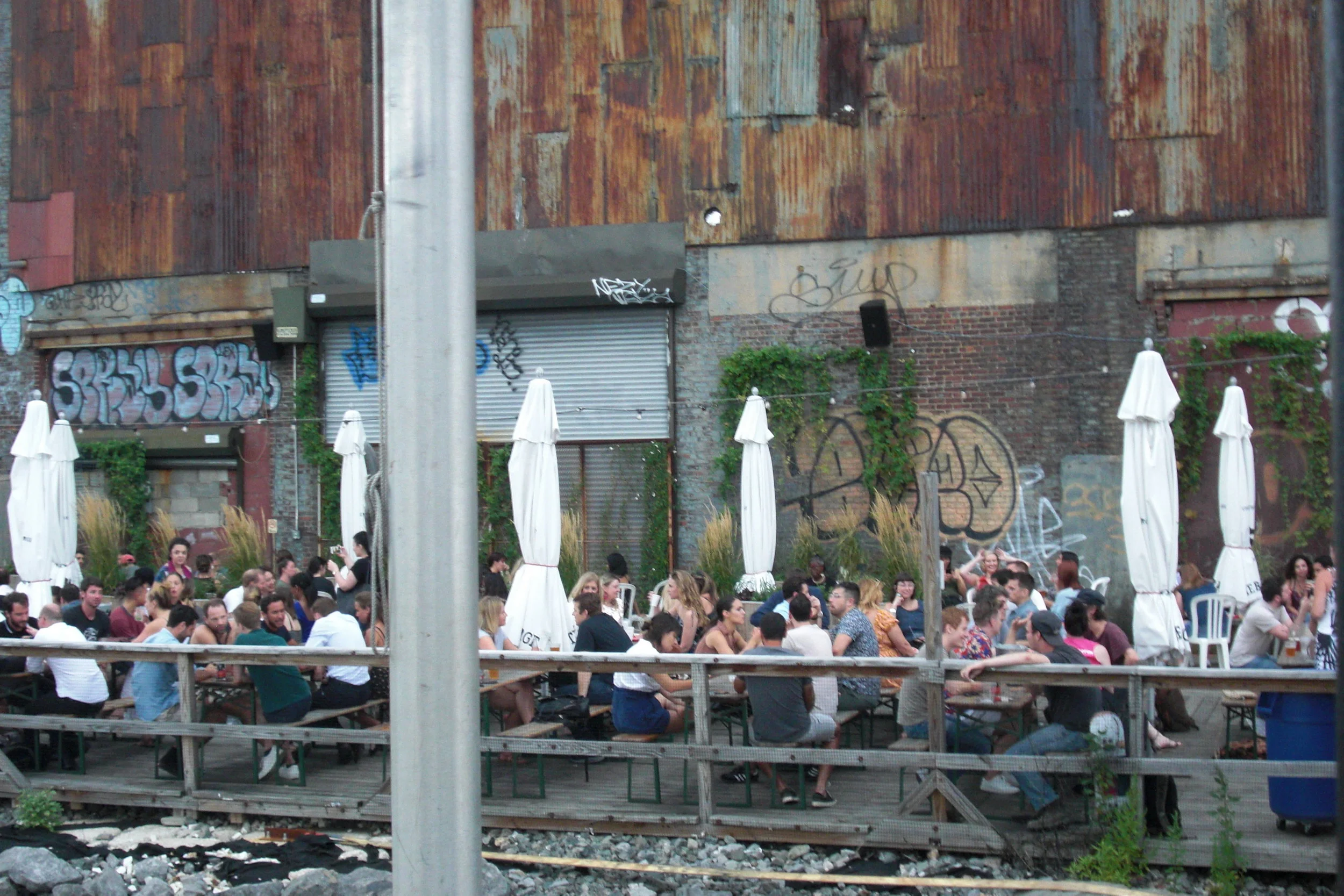
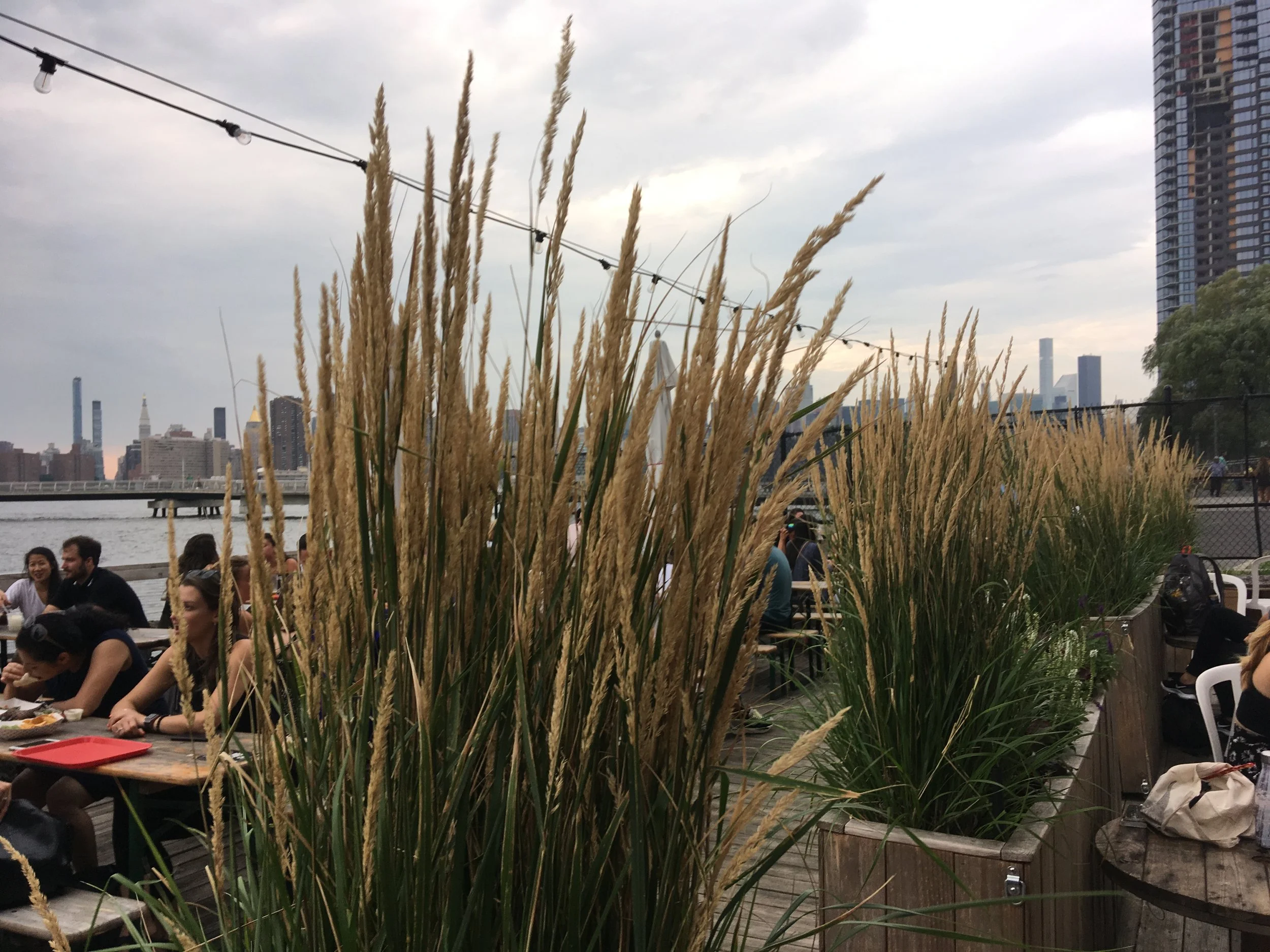
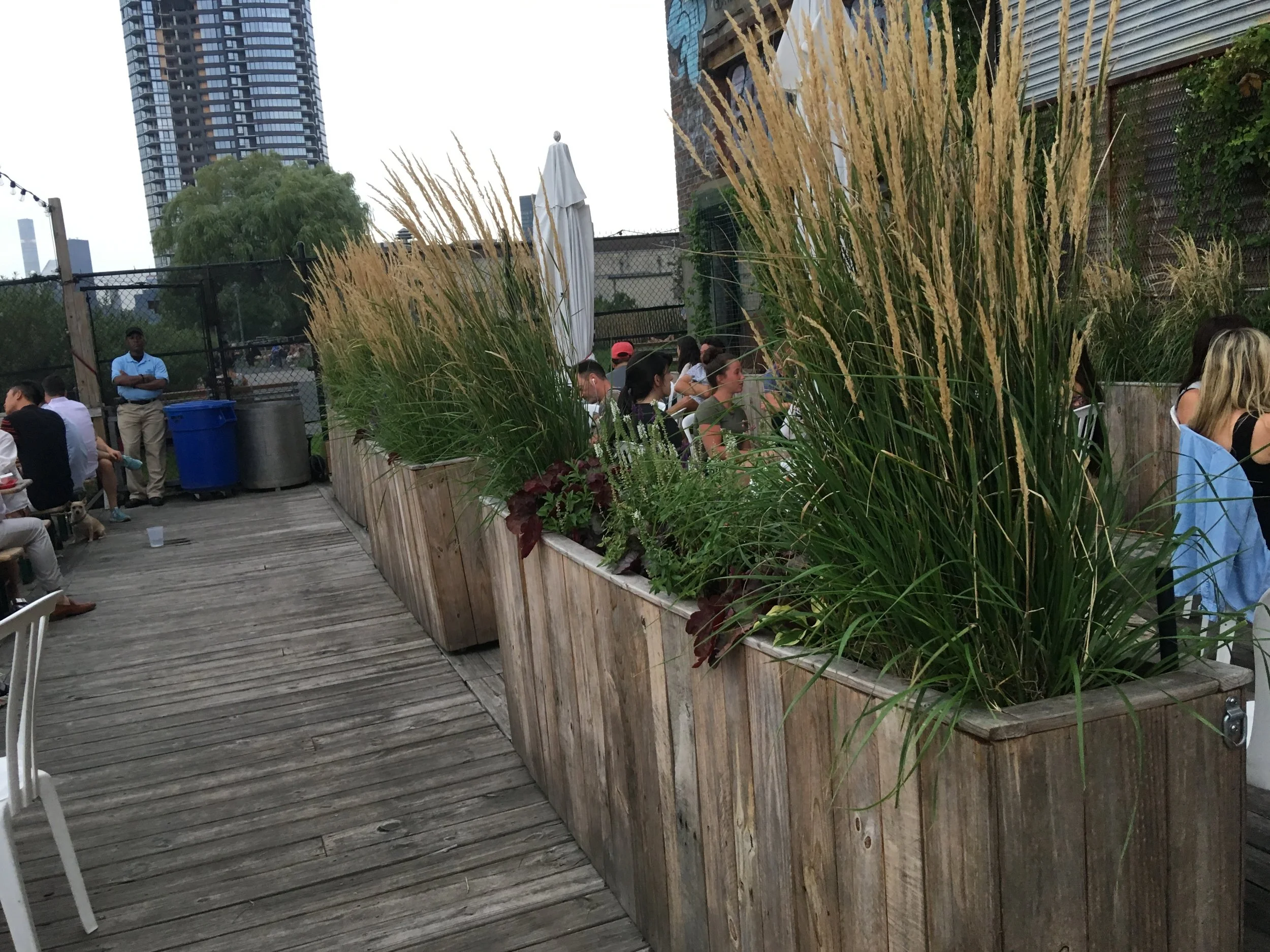
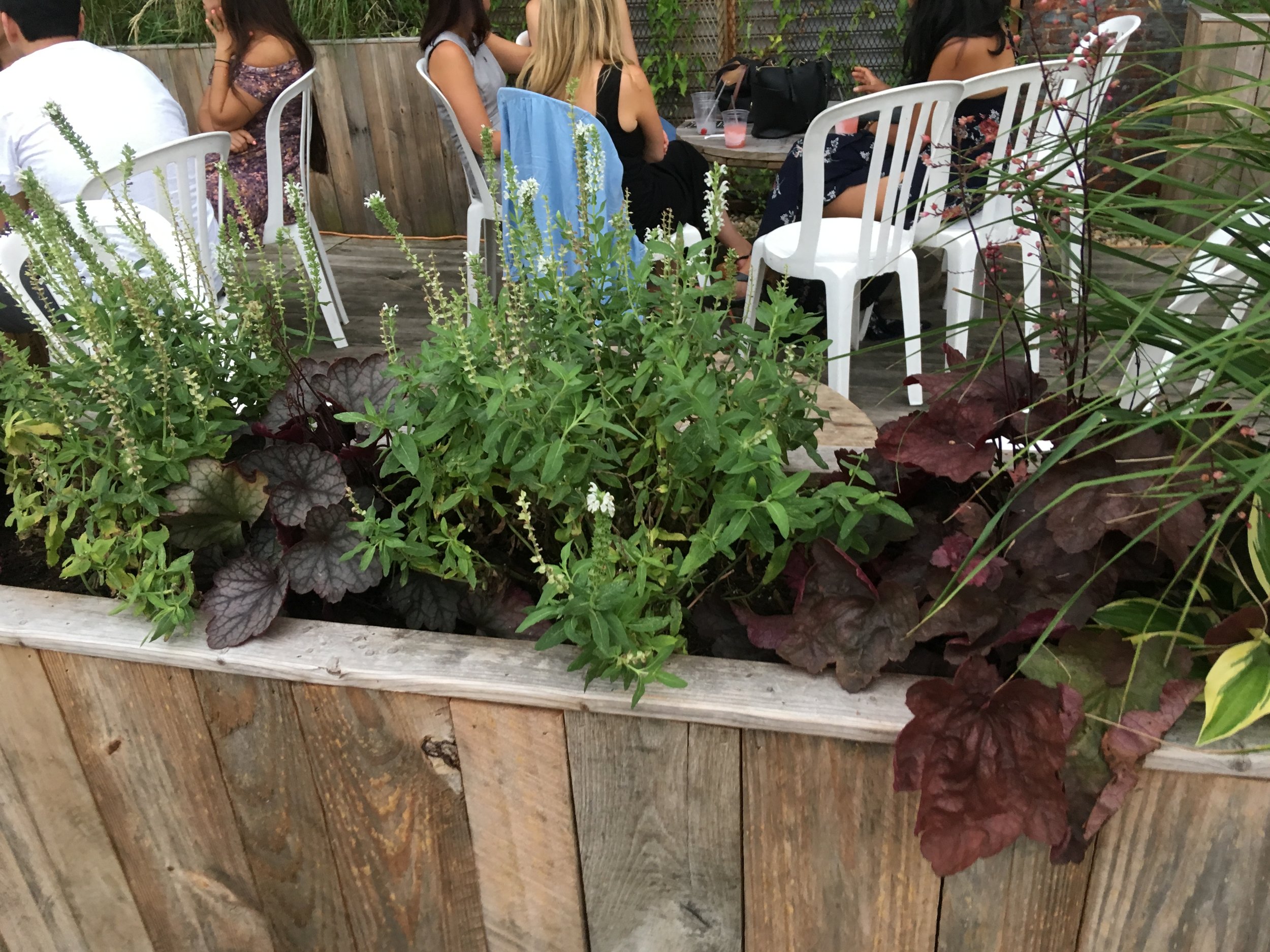
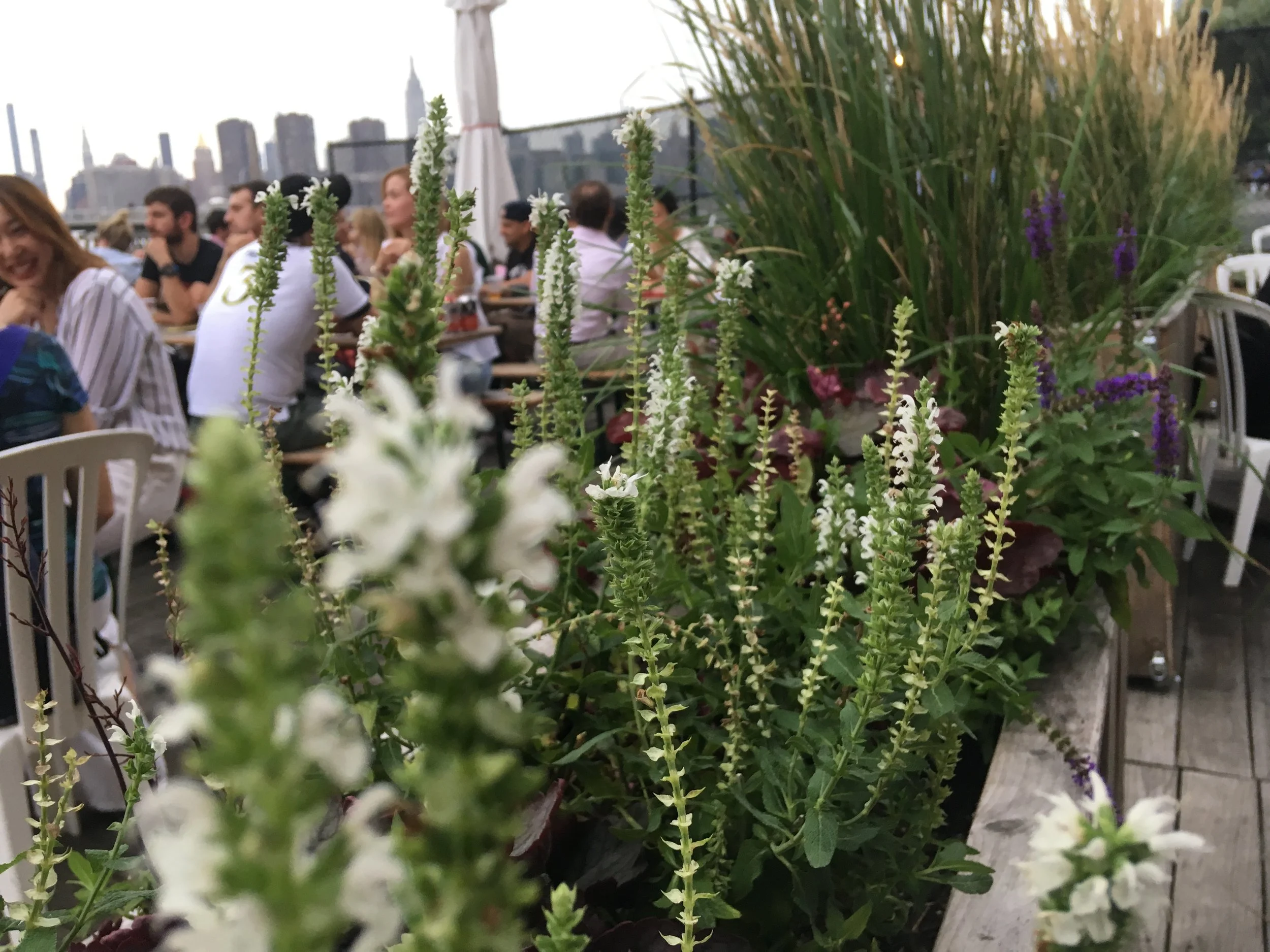
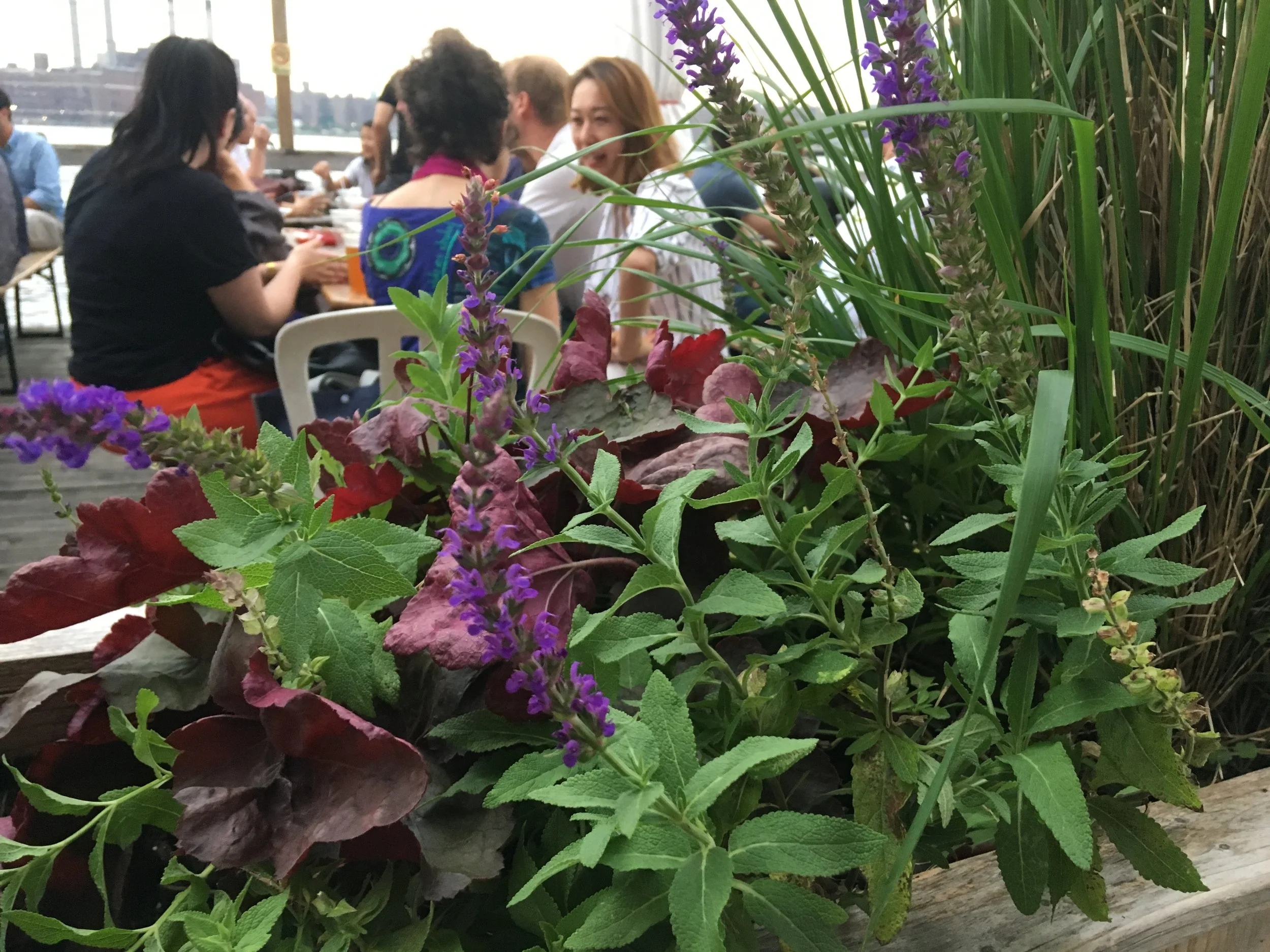
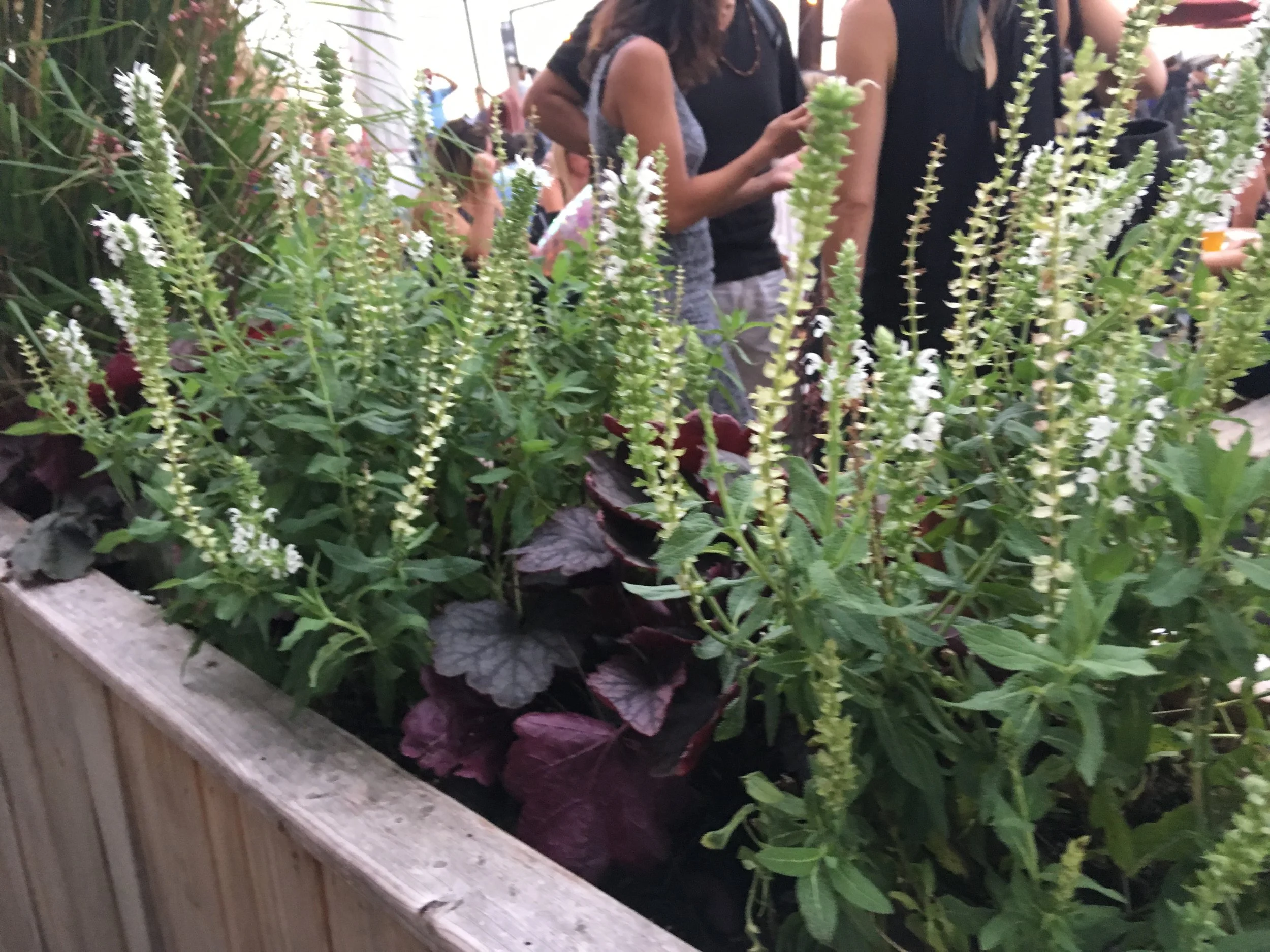
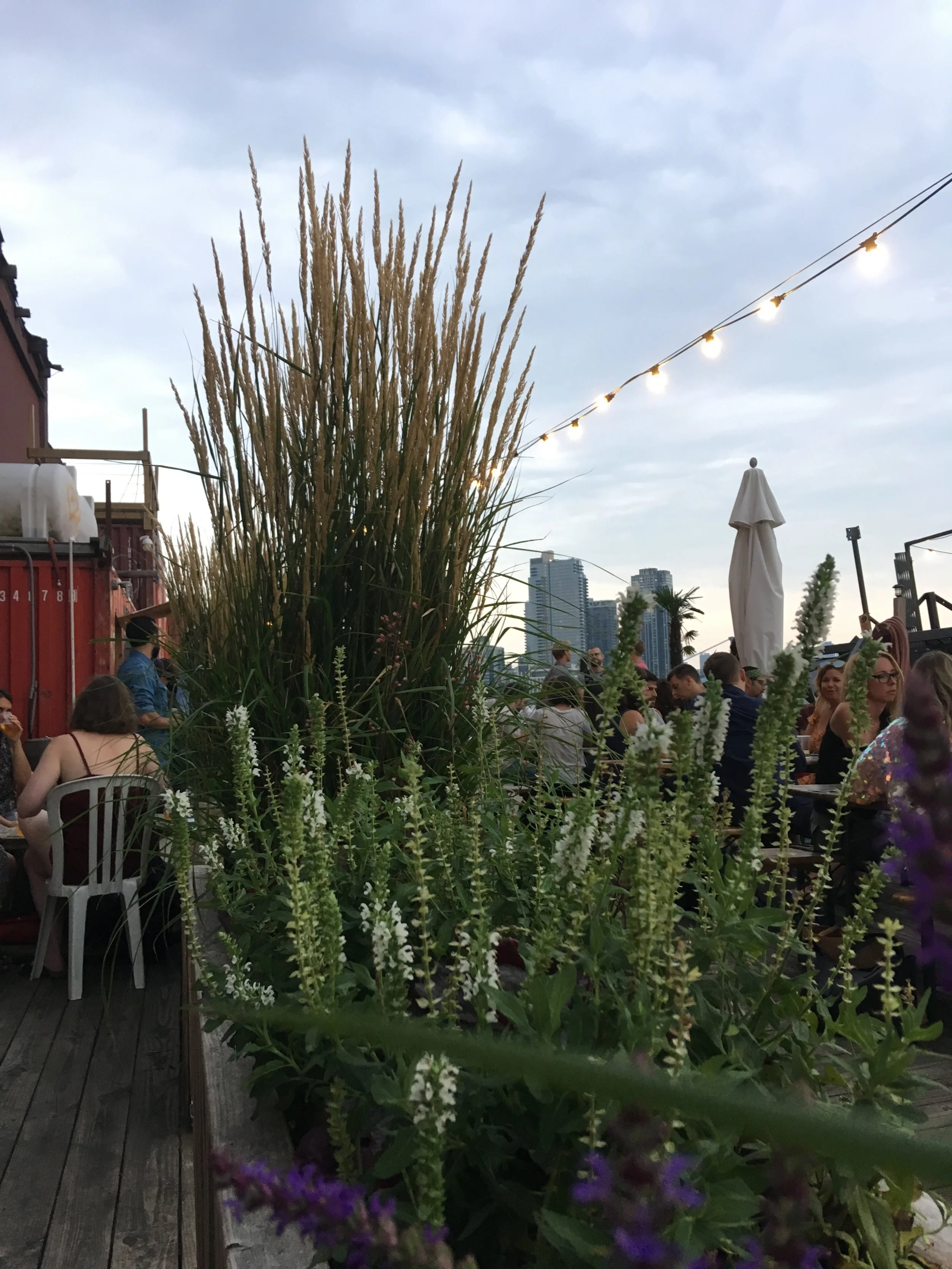
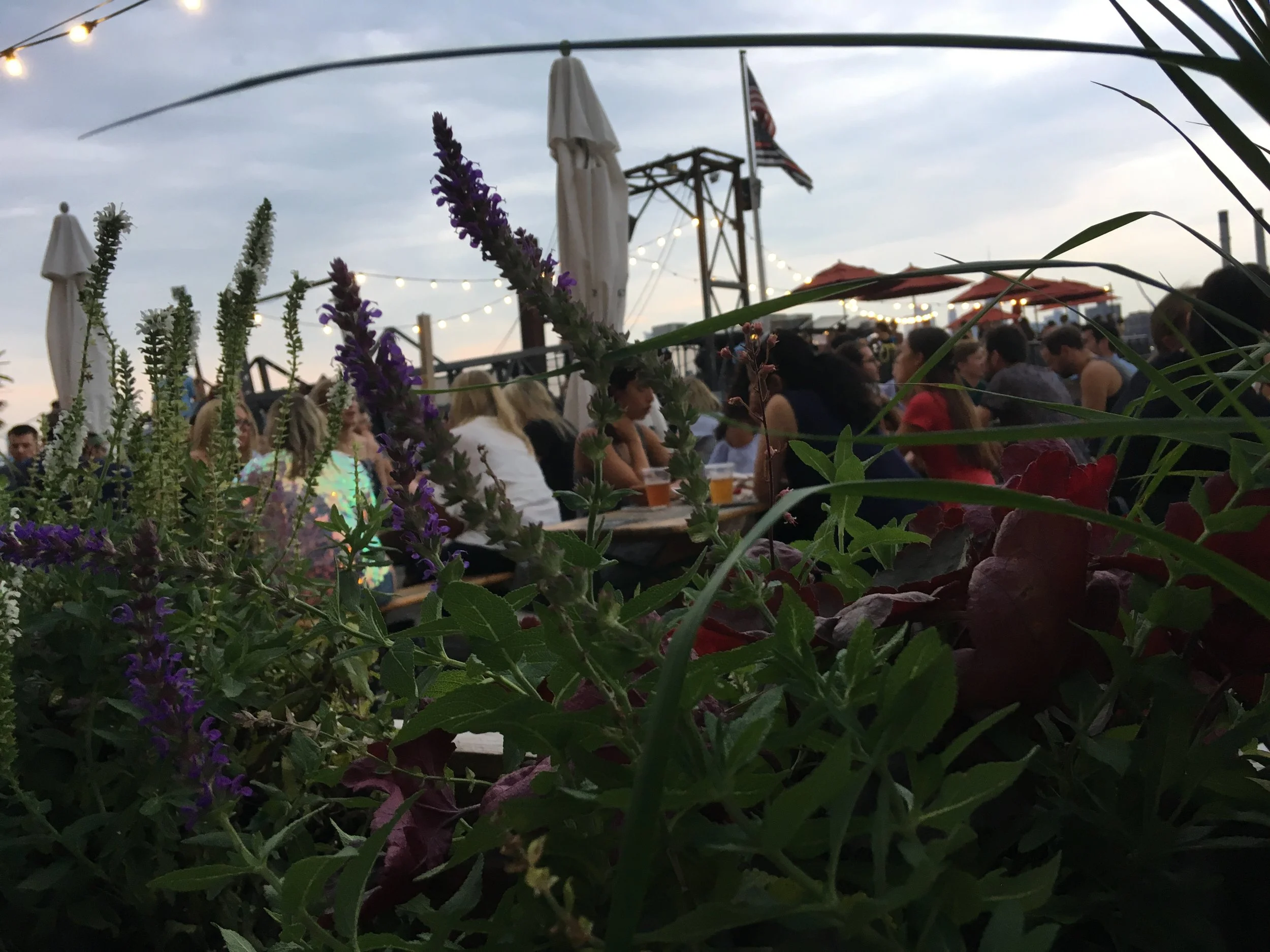
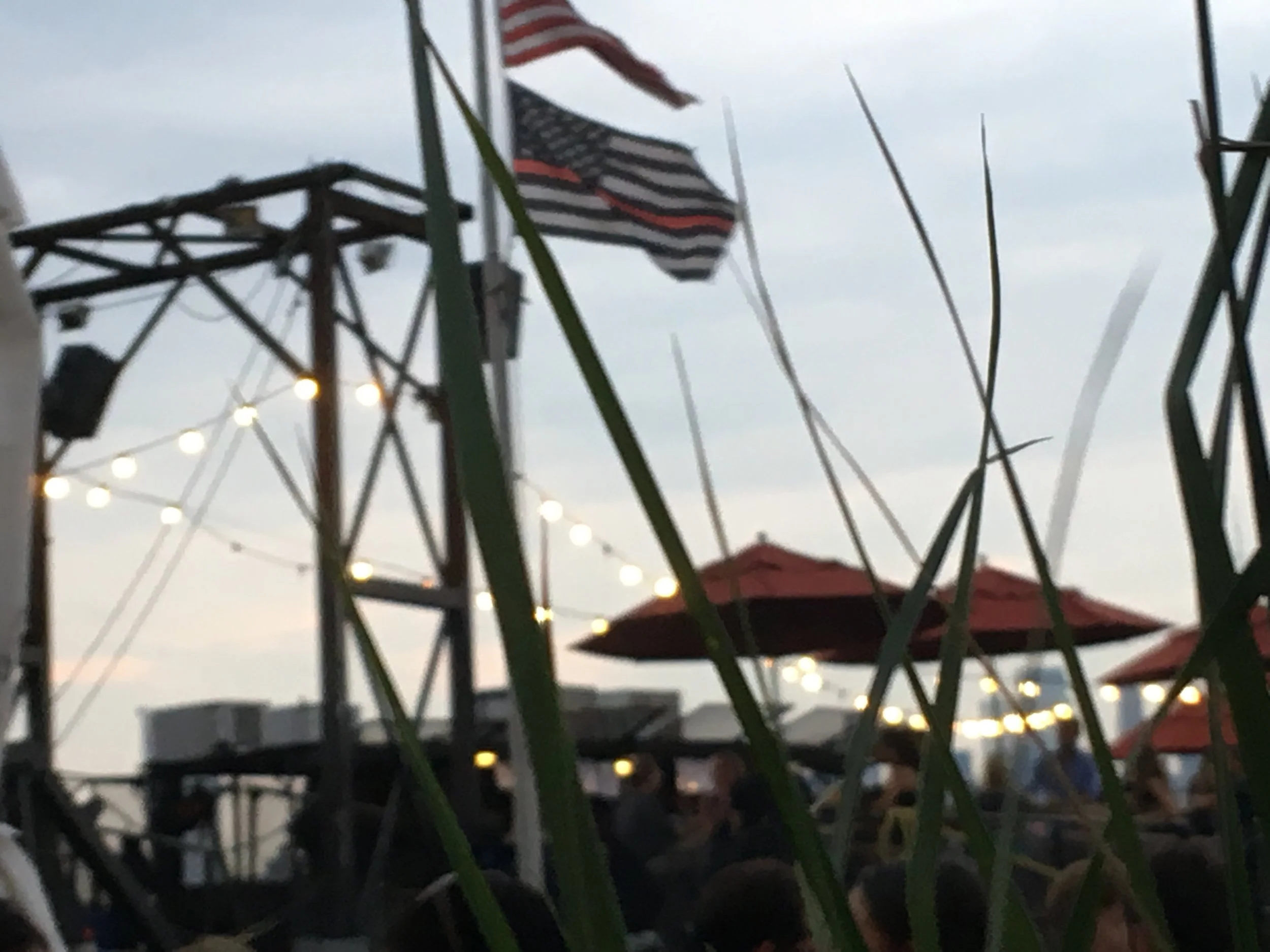
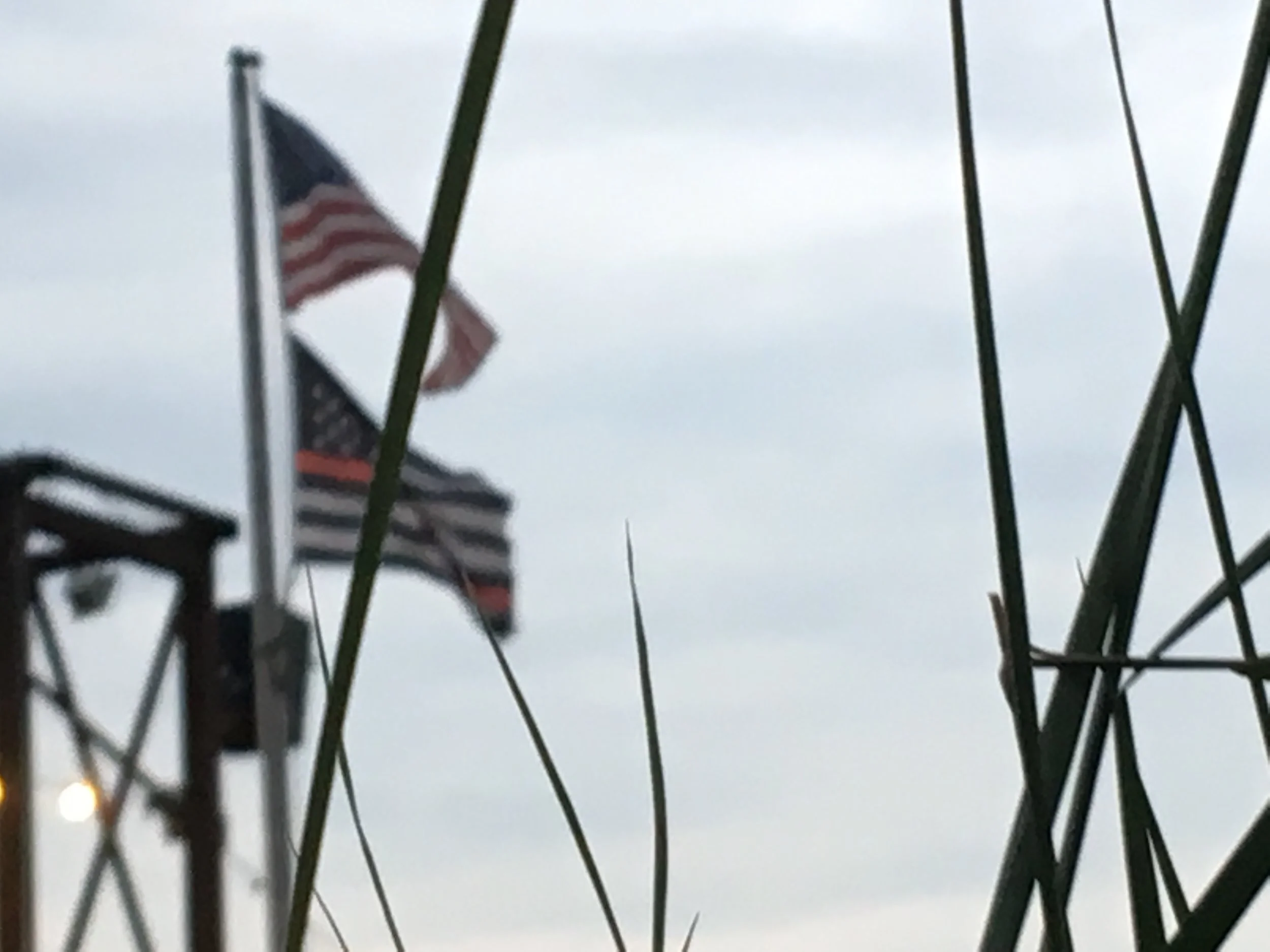
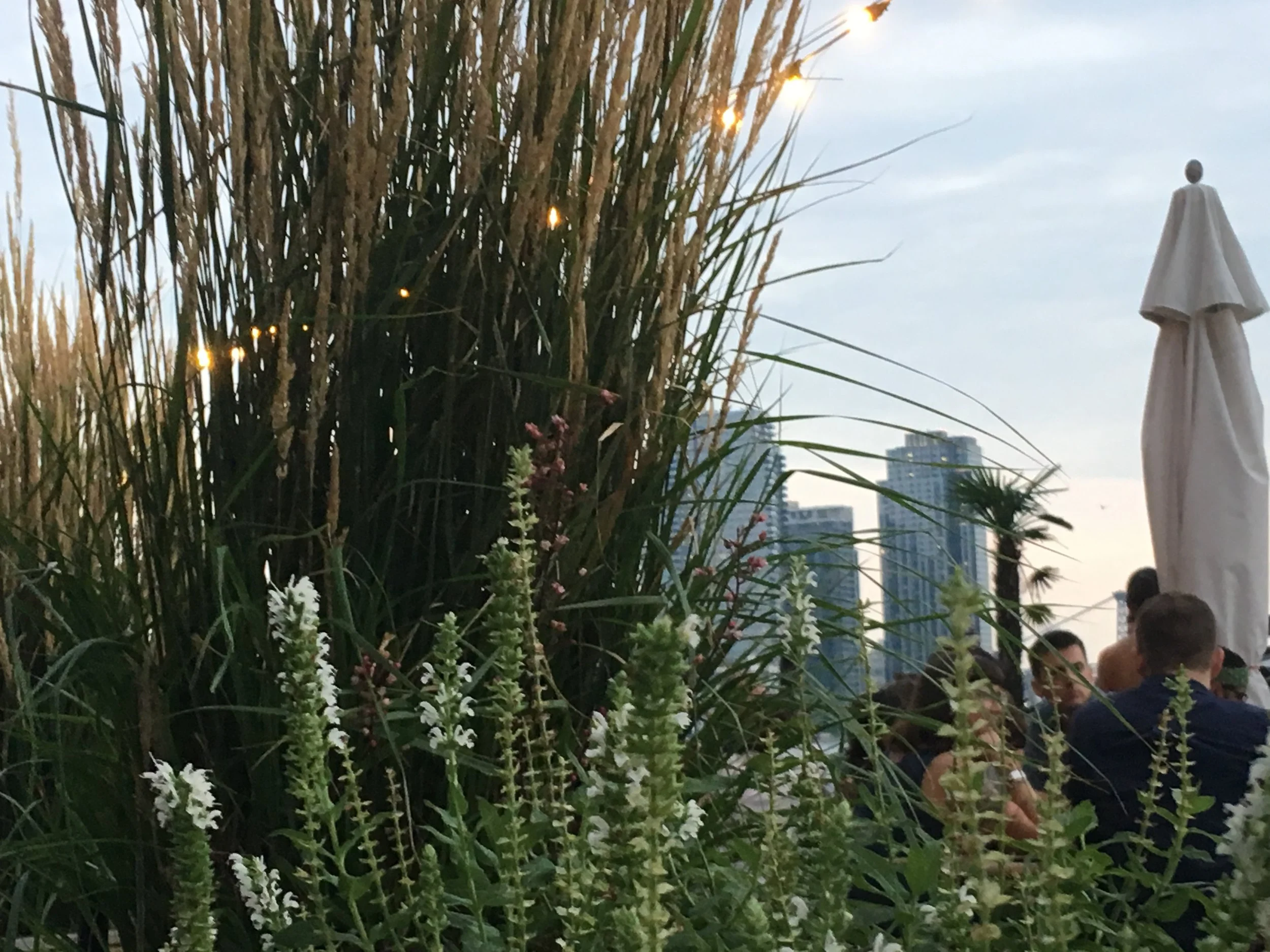
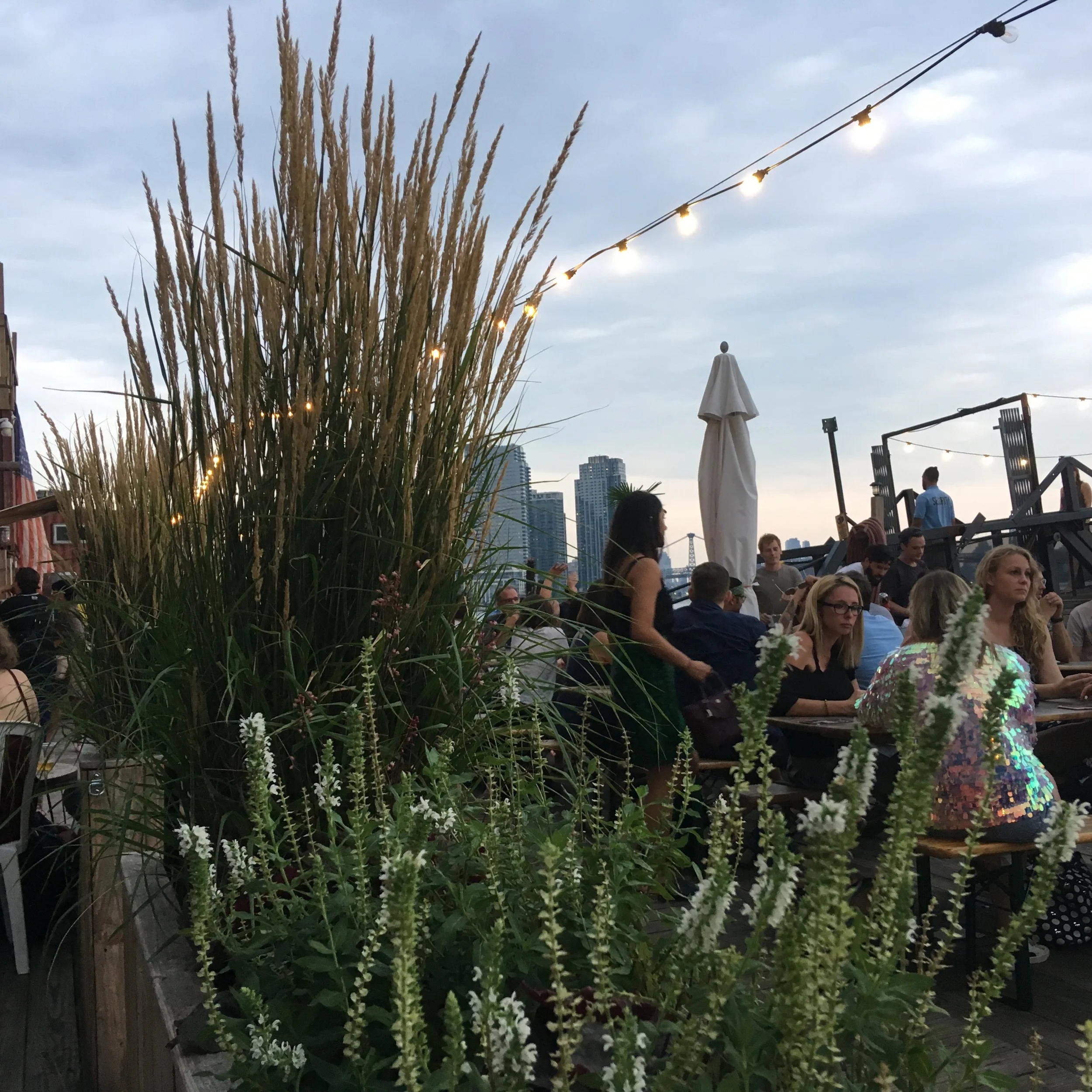
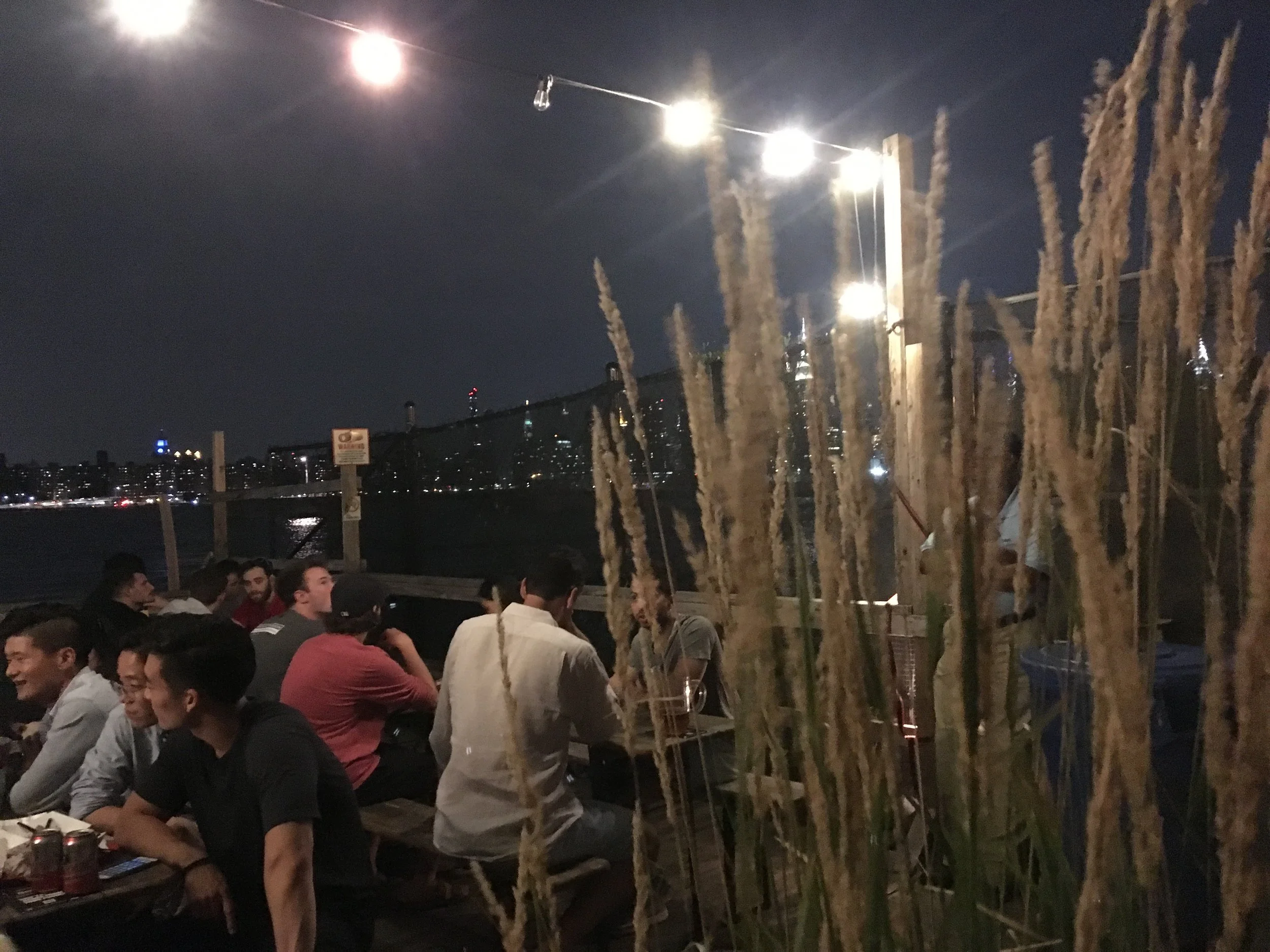

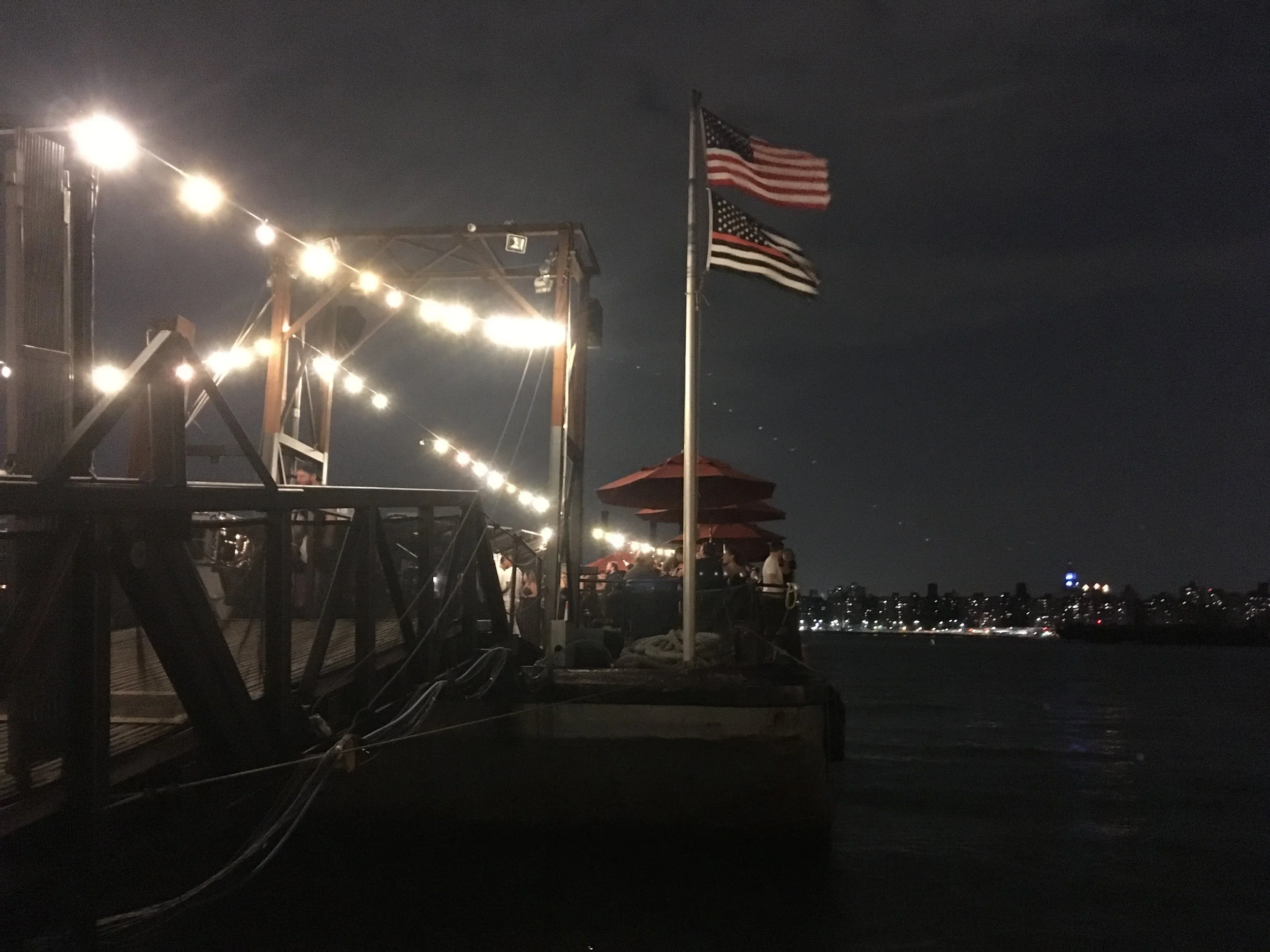
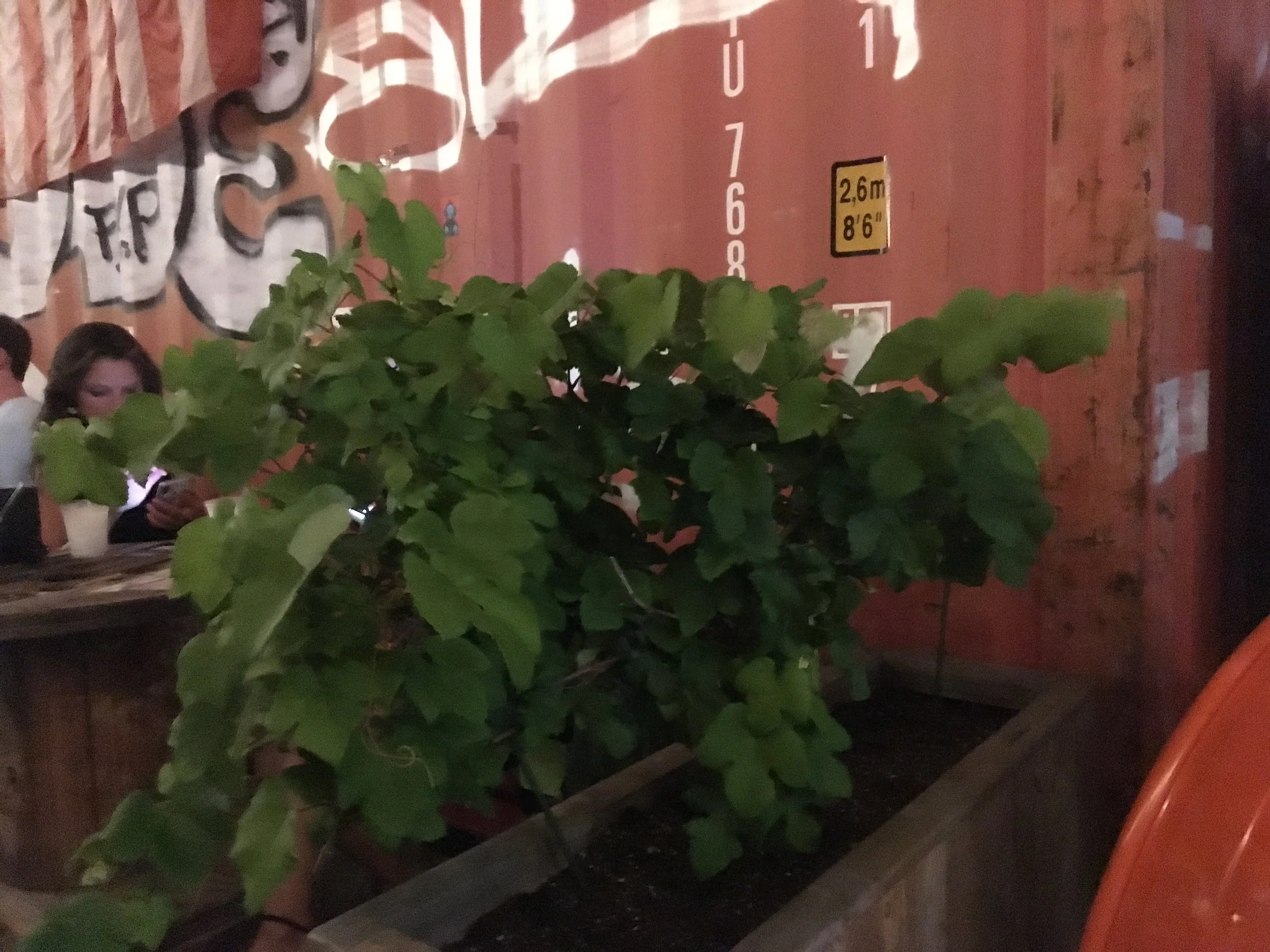
Your Custom Text Here
Picking plants for The Brooklyn Barge has been a learning experience. Some that we thought would be hardy to withstand the wind, sun and drought-like conditions, didn’t make it, including the Pampas grass, which is pretty tough and equally tough to get rid of in your landscape. We planted in deep long boxes along a fence, figuring it would be a great privacy-screen: the grass grows between 10 to 13 feet tall and has a six-foot wide spread. (Note: if you plant in the landscape they can really take over a garden and the self-sowing seeds can sprout in almost any kind of soil.)
So we were surprised they didn’t make it. We had a lot of wet weather on the East Coast and their roots looked damp and unhappy when we pulled them up. The other beds with Karl Foersters looked great and they survived a tough winter and wet season. They had more direct sun beating down on them. They were planted in tall containers made out of recycled wood. The grasses, which grow 5 to 6 feet tall and 2 to 3 feet wide, work great against the high-industrial walls. We wanted a linear architectural growth pattern. They also make a dramatic statement in a garden or meadow.
Rising up to about six feet, Feather Reed Grass with its tall elegant feathery blooms is famous for waving in the wind, adding motion to the landscape, even with the slightest breeze.
We also planted lots of perennial salvias (sages) that can take hot and dry conditions and that would bloom all summer long.
As an underpinning of plants to add color we planted Coral Bells (Heuchera). They tend not to like dry, hot soil, but using them as ground cover, along with Hostas, The grasses and salvias provided protection against the sun.
We also planted grapes last year which are bearing fruit now. Next season, we will use a trellis to support the vines. We will probably have to do the same with the hops as they are so much stronger than last year.
We let the plants do their thing and be wild to fit into the gritty and graphite landscape of The Brooklyn Barge.
Picking plants for The Brooklyn Barge has been a learning experience. Some that we thought would be hardy to withstand the wind, sun and drought-like conditions, didn’t make it, including the Pampas grass, which is pretty tough and equally tough to get rid of in your landscape. We planted in deep long boxes along a fence, figuring it would be a great privacy-screen: the grass grows between 10 to 13 feet tall and has a six-foot wide spread. (Note: if you plant in the landscape they can really take over a garden and the self-sowing seeds can sprout in almost any kind of soil.)
So we were surprised they didn’t make it. We had a lot of wet weather on the East Coast and their roots looked damp and unhappy when we pulled them up. The other beds with Karl Foersters looked great and they survived a tough winter and wet season. They had more direct sun beating down on them. They were planted in tall containers made out of recycled wood. The grasses, which grow 5 to 6 feet tall and 2 to 3 feet wide, work great against the high-industrial walls. We wanted a linear architectural growth pattern. They also make a dramatic statement in a garden or meadow.
Rising up to about six feet, Feather Reed Grass with its tall elegant feathery blooms is famous for waving in the wind, adding motion to the landscape, even with the slightest breeze.
We also planted lots of perennial salvias (sages) that can take hot and dry conditions and that would bloom all summer long.
As an underpinning of plants to add color we planted Coral Bells (Heuchera). They tend not to like dry, hot soil, but using them as ground cover, along with Hostas, The grasses and salvias provided protection against the sun.
We also planted grapes last year which are bearing fruit now. Next season, we will use a trellis to support the vines. We will probably have to do the same with the hops as they are so much stronger than last year.
We let the plants do their thing and be wild to fit into the gritty and graphite landscape of The Brooklyn Barge.